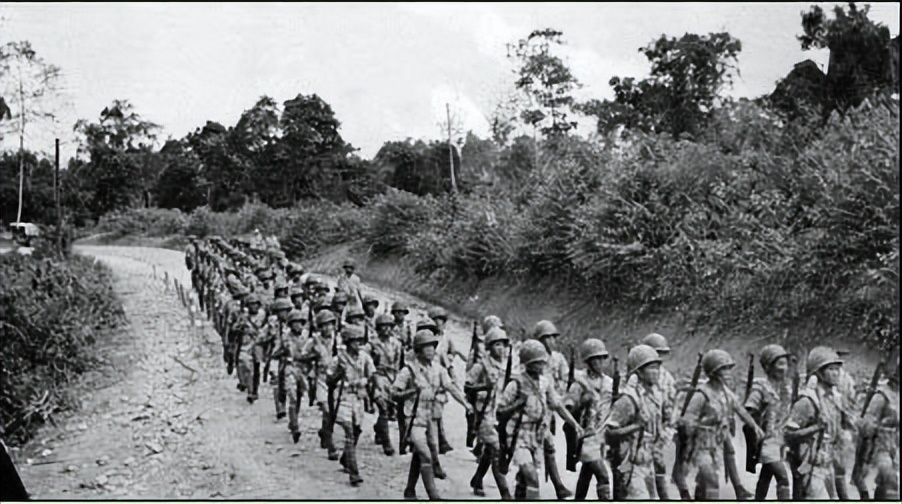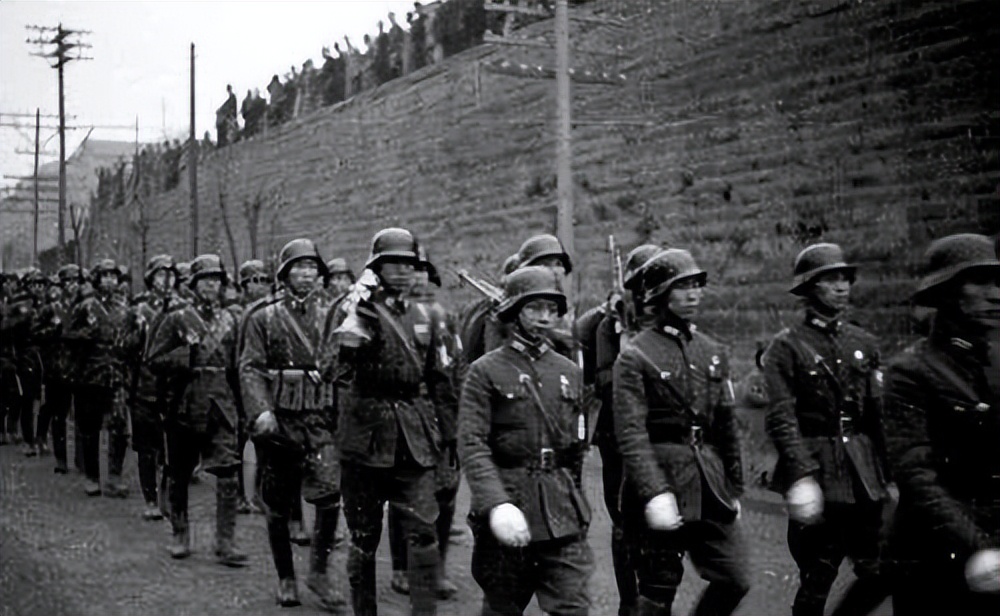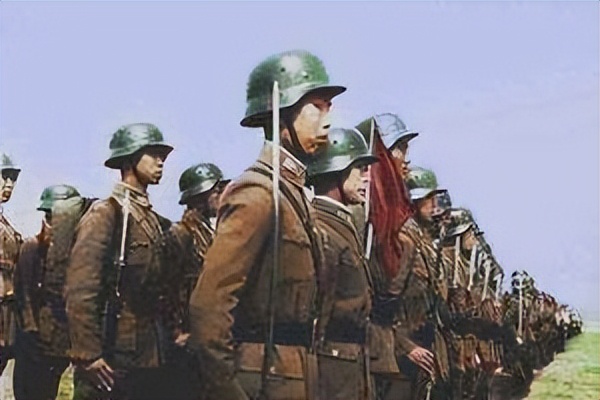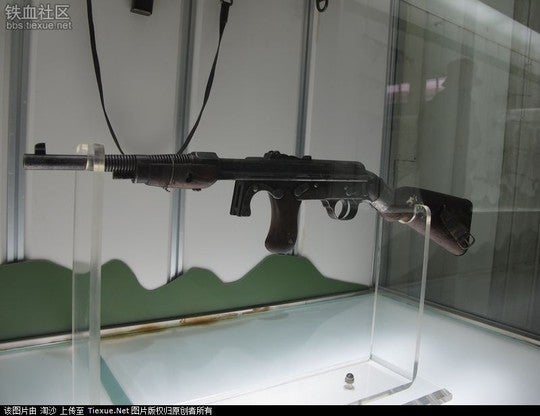How strong is the Tax Police Corps?The combat power surpassed that of the German armorer, and the remnants defeated the Japanese A-species division
2024-10-21 06:00
In the battle sequence of the Anti-Japanese War troops, the anti-Japanese troops at that time were divided into the Central Army and the motley army. As the name suggests, the so-called Central Army was Lao Jiang’s starting team. He relied on the Whampoa Military Academy and mainly built the capital of the Jiangsu-Zhejiang Consortium. They had their own “private soldiers”, which was the Central Army. At that time, the troops of the warlords in various places were all miscellaneous armies. Although the equipment of the miscellaneous army was not as good as that of the Central Army, some of the warlords’ troops were better than the Central Army. Not to mention too much.

For example, the Gui Army in Guangxi, although the equipment is not as good as the Central Army, but because of Guangxi’s sturdy folk customs, it can compete with the Central Army.
However, at that time there was a very special unit. Strictly speaking, it could not even be called a unit. It was an inspector team focusing on anti-smuggling and tax investigation. In a sense, it was a “police”. This is Song Ziwen’s Tax Police Corps.
However, such a “police team” has become an alternative. The Songhu Anti-Japanese War Tax Police Corps participated in the two battles, and it was these two battles that saw the sturdy combat effectiveness of the Tax Police Corps.
In the early days of the Anti-Japanese War, the most elite troops of the Chinese army were German weapon divisions, but the combat effectiveness of the Tax Police Corps at that time was almost on a par with the German weapon divisions.

So how strong is the Tax Police Corps?
The establishment of the Tax Police Corps is as luxurious as the elite troops of the Central Army
We know that the capital of Lao Jiang’s start is the Jiangsu-Zhejiang consortium headed by the Song family, and it is precisely because of Lao Jiang that Song Ziwen has the opportunity to build his own private army.
However, because the relationship between Song Ziwen and Lao Jiang has always been at odds, Lao Jiang will not allow him to support private soldiers, so the army Song Ziwen built for himself is known as an anti-smuggling and tax inspection force.
At that time, the Tax Police Corps had a total of 6 regiments, but the establishment of these 6 regiments was much larger than the regular regiments.
At that time, there were 14 soldiers in a regiment of the Tax Police Corps, 1 light machine gun, 6 shifts in each platoon, and 3 platoons in a company, and each company had about 250 soldiers, that is, the strength of a company in the Tax Police Corps was equivalent to Two companies of the Central Army’s A-level troops.

Under such an excess establishment, each regiment has 5,500 troops, a total of 6 regiments, plus the directly affiliated troops, the establishment of a tax police general regiment has reached 30,000.
You must know that the most elite 87th, 88th and 36th divisions of the Central Army at that time only had 12,000 people. Under the circumstances at that time, only the Teaching Corps could compete with the Tax Police Corps.
As for weapons, the Tax Police Corps is even more luxurious.
At that time, the German Armourer was more of a form and no god, because the German Armourer troops were more equipped with German Mauser-style rifles, and other heavy weapons were not equipped at all.
Behind the Tax Police Corps is the Minister of Finance Song Ziwen. It can be said that financial appropriation is a matter of Song Ziwen’s words, and Song Ziwen was backed by American capital at that time, so he naturally had a lot of money.
At that time, almost every officer and soldier of the Tax Police Corps was equipped with a German Mauser rifle, each squad had a Czech light machine gun, and even the above units had a Maxim heavy machine gun.
Moreover, the recruitment standards of the Tax Police Corps are also very strict. Soldiers must have a certain degree of education, and officers must have studied in military schools such as the United Kingdom and the United States. For example, the famous Sun Liren once served in the Tax Police Corps.
And this Tax Police Corps has become the biggest capital for Song Ziwen and Lao Jiang to compete against.
Songhu Anti-Japanese War, how did the Tax Police Corps perform?
On January 28, 1932, Japan launched a war in Shanghai in order to repeat 9/18, and the January 28 Incident broke out.
Since part of the tax police regiment was deployed in Shanghai at that time, part of the tax police regiment was under the command of the 19th Army, and the other part was assigned to the command of the Fifth Army, which came to support the 19th Route Army.
In this battle, people saw the powerful combat effectiveness of the Tax Police Corps. At that time, the Second Battalion of the Second Regiment of the Tax Police Corps fought against the Japanese at Longhua Airport. The officers and soldiers of the Second Battalion fought against the enemy with their fortifications, but the enemy Artillery and naval support, but under such difficult circumstances, the Tax Police Corps also scored a 1:1 battle loss ratio.
This kind of battle damage ratio was already remarkable at the time.

In the Battle of Songhu in 1937, the Tax Police Corps met the Japanese army again in Suzhou River.
During the Battle of Songhu at that time, the elite divisions of the Japanese army crossed the Suzhou River seven times, but they were all repelled.
However, under the all-round competition between China and Japan at that time, the Tax Police Corps eventually suffered heavy casualties due to the backwardness of weapons and equipment, and the Suzhou River position fell.
The Songhu World War I Tax Police Corps suffered heavy casualties, but it achieved an astonishing battle loss ratio of 1:1, which was even brighter than the performance of the Central Armed Forces Engineers in the team at that time.
After the Battle of Songhu, there were only more than 5,000 members of the Tax Police Corps of more than 30,000 people. Later, based on these 5,000 people, the Tax Police Corps was rebuilt and participated in the Battle of Wuhan. Unfortunately, the Battle of Songhu left the Tax Police Corps with more than 5,000 members. The regiment was severely damaged, and with the addition of Gu Zhutong’s officers and soldiers who often deducted tax from the Police Corps, their combat effectiveness was not as good as before.

After the war, a part of the wounded soldiers of the former 4th regiment officer Sun Liren’s Tax Police General Regiment established the new 38th division. It was this new 38th division that made great achievements in the Burmese battlefield. First, it was in Ren’anqiang with 1,000 people. The inferior troops repelled 3,000 Japanese troops and rescued 7,000 British troops who were surrounded.
After the battle of the Northern Myanmar Counter-offensive, the expeditionary force with the blood of the Tax Police General Corps swept the northern Myanmar with the trend of destroying the dead and the rotten.

Interesting Chinese Submachine Gun
by Steve Johnson
Published: July 26th, 2012

A reader asked for help identifying an interesting Chinese gun I have never come across before. This gun looks remarkably futuristic for a gun that has been around since at least during WWII. I am sure someone here can identify it for us.

Photo taken in Beijing Military Museum
The gun has a very long receiver and the bolt is obviously not telescopic. Despite being a long gun, the barrel is relatively short, it accounts for less than a third of the overall length! Fire control and magazine release are placed where they can be operated with the hand still on the foregrip, quite a nifty feature.



Photo published in Report from Red China by Harrison Forman (1944)
